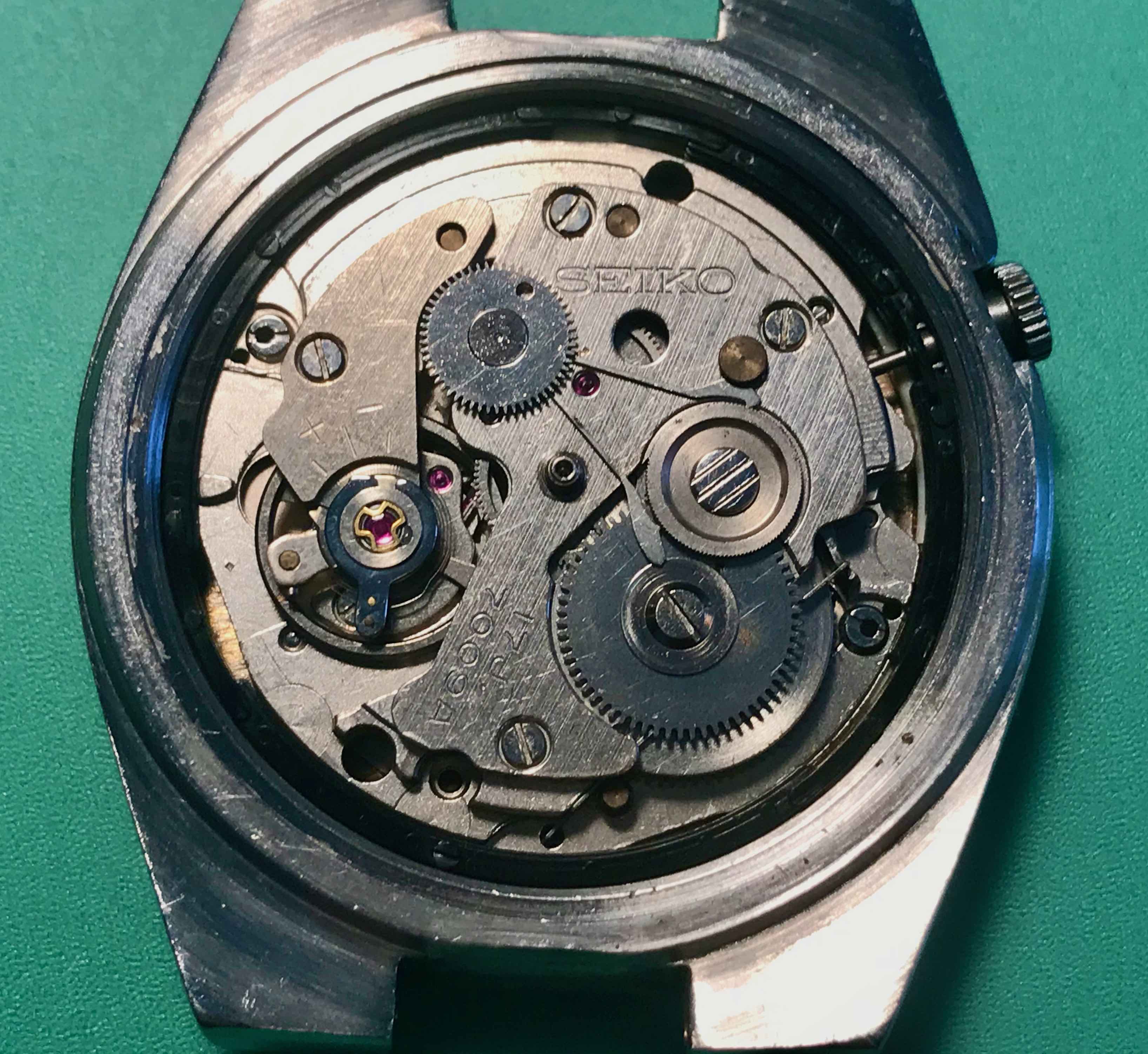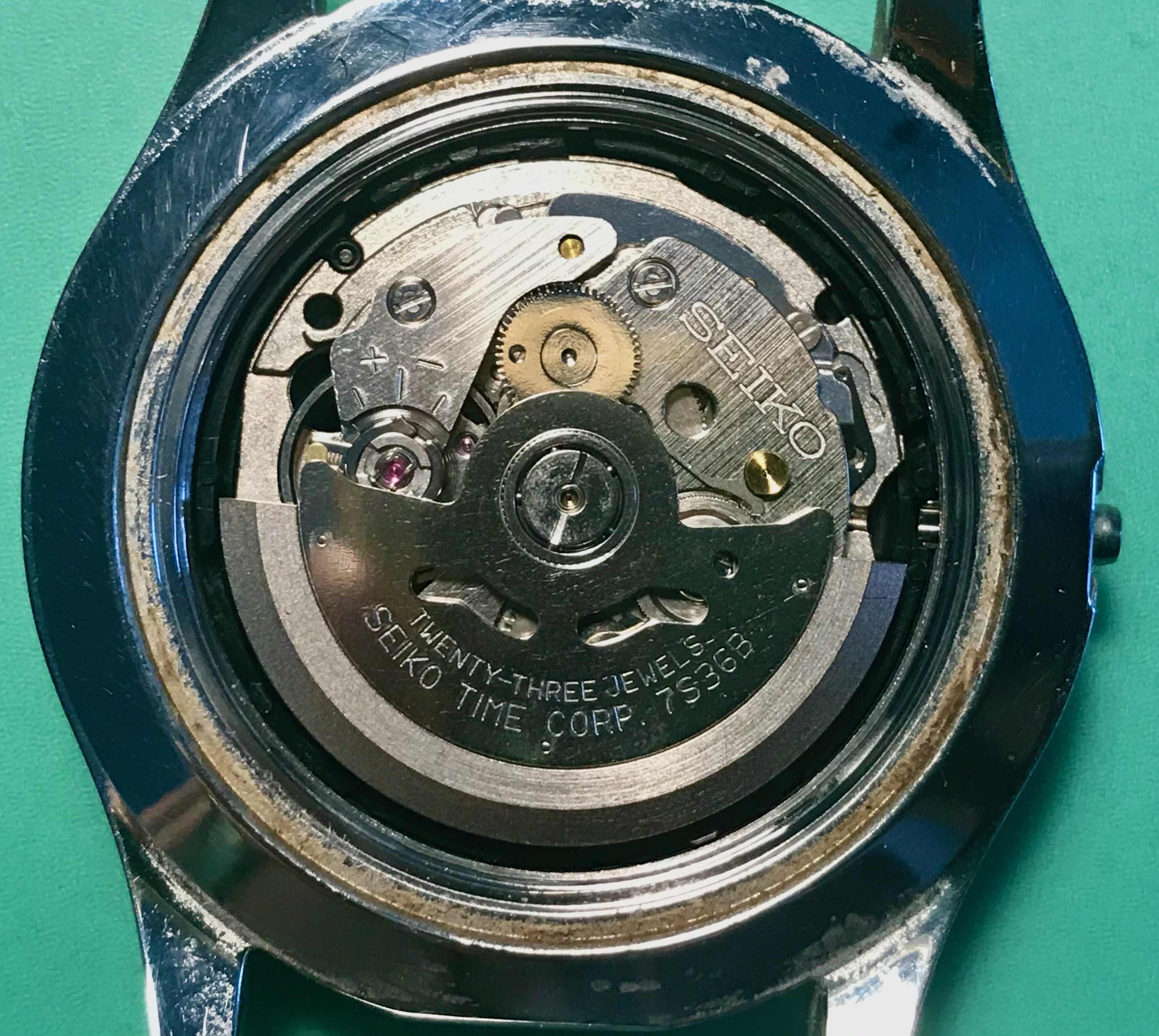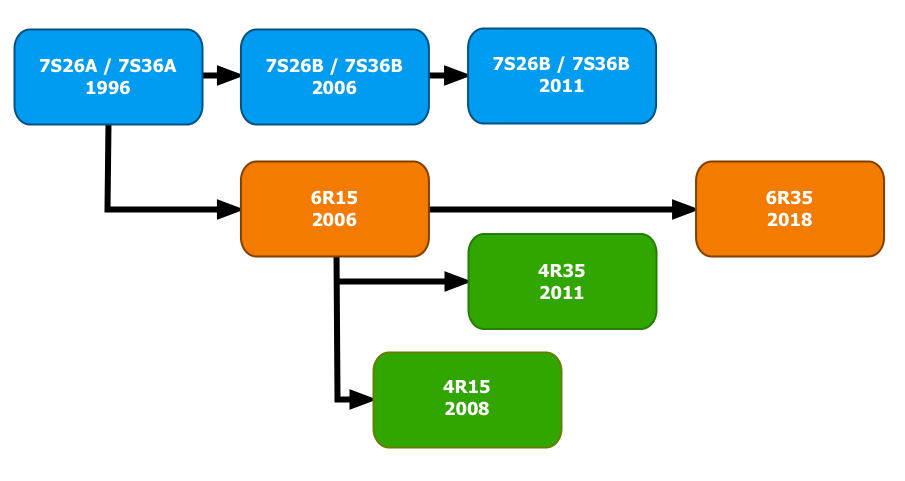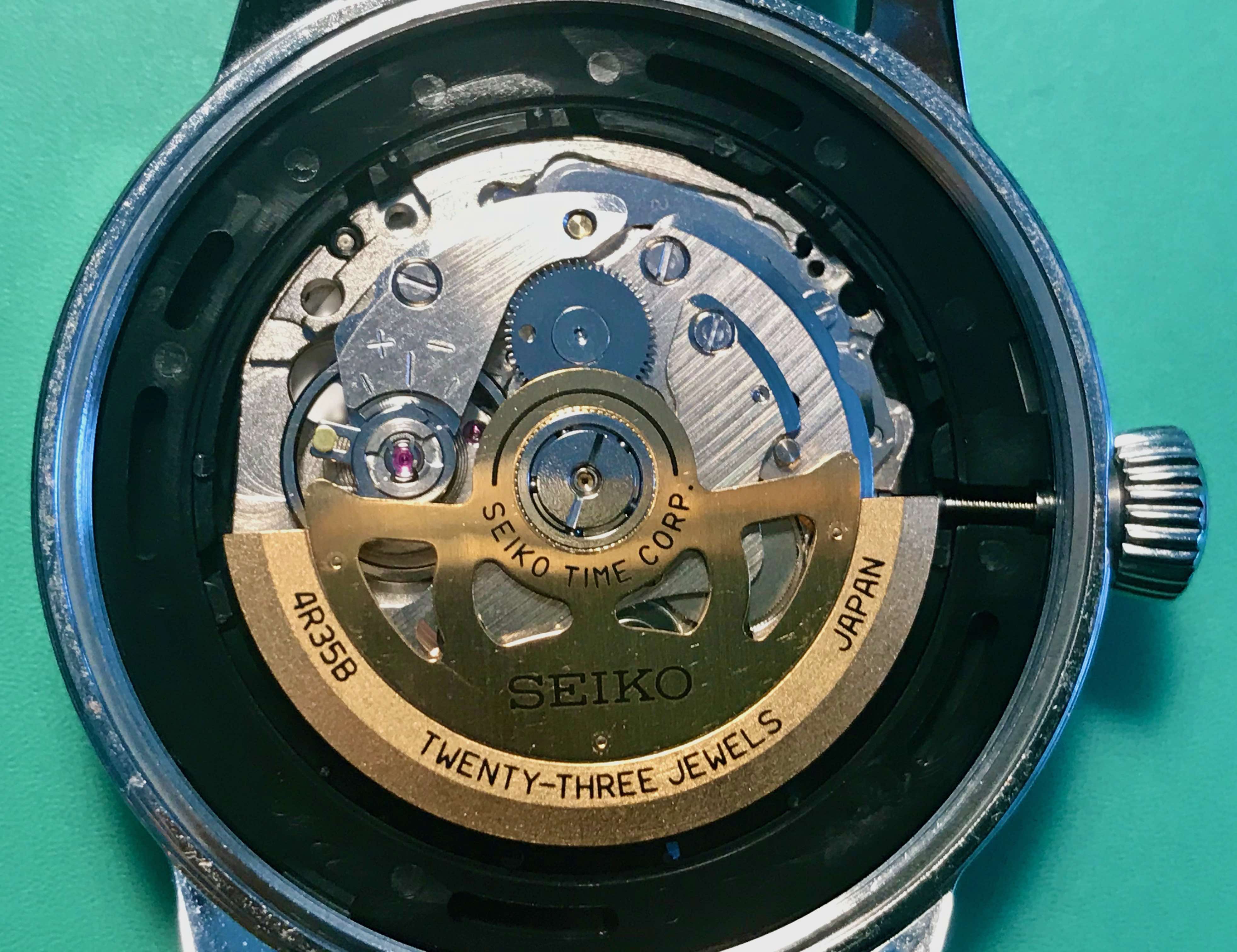Seiko always offered mechanical watches even after the Quartz revolution they
themselves have initiated. The main workhorse movement in the mid-range was the
7000 series that was produced from the seventies until the end of the nineties.
In 1996 Seiko introduced the 7S26 family as a successor and replacement for the
7000 series for the mainstream market of automatic watches and has since been
a mainstay in mechanical Seiko watches.
Origin of all 7S movements, a 7009 movement from the eighties
 Seiko offered
mechanical watches throughout the eighties, and the 7000 movements were besides
the 6300 series the movements used, but this is the topic of another article.
In this article we will focus on the movements that descend from the 7S26
movement introduced in 1996. This movement lacked advanced features as hacking
second and hand-winding in the beginning, but Seiko iterated on this design
for the last 25 years adding those features in later incarnations. Until today
the 7S26 design is the basis for all Seiko movements from entry level to
watches of the upper mid-range and even high-end watches.
Seiko offered
mechanical watches throughout the eighties, and the 7000 movements were besides
the 6300 series the movements used, but this is the topic of another article.
In this article we will focus on the movements that descend from the 7S26
movement introduced in 1996. This movement lacked advanced features as hacking
second and hand-winding in the beginning, but Seiko iterated on this design
for the last 25 years adding those features in later incarnations. Until today
the 7S26 design is the basis for all Seiko movements from entry level to
watches of the upper mid-range and even high-end watches.
7S36 movement in a Seiko 5
 Particularly in watch forums there is great confusion about the relation
between the various mechanical movements of this family that have been released
in the last 25 years. There are three major revisions of the 7S26 movement:
7S26A, 7S26B in 2006 and 7S26C in 2011. All 7S movements are working at 21600
bph and have a power reserve of about 40 hours. The 7S26 movement has 21
jewels, there is also a version with 23 jewels called 7S36. Apart from the
additional two jewels, these two versions are otherwise identical. Both
versions are mostly employed in Seiko 5 series watches.
Particularly in watch forums there is great confusion about the relation
between the various mechanical movements of this family that have been released
in the last 25 years. There are three major revisions of the 7S26 movement:
7S26A, 7S26B in 2006 and 7S26C in 2011. All 7S movements are working at 21600
bph and have a power reserve of about 40 hours. The 7S26 movement has 21
jewels, there is also a version with 23 jewels called 7S36. Apart from the
additional two jewels, these two versions are otherwise identical. Both
versions are mostly employed in Seiko 5 series watches.
Illustration of the 7S family tree:

In 2006, Seiko introduced the 6R15 as a high-end derivative of the 7S26B movement, which was released at the same time, that was used in the upper mid-range to high-end market, which at that time was based on the expensive high-beat 4S15 movement. It adds a hacking second, manual winding and a Spron 510 mainspring with a longer power reserve of 50 hours. There was a not very common offspring, the 4R15 movement released in 2008, that lacked the hacking second and hand winding features but retained the Spron mainspring. Many iconic modern Seiko watches use the 6R15 movement, examples are the SARB033 “Spirit”, the SARB065 “Cocktail time”, and the SARB017 “Alpinist”. In 2011 Seiko released the 4R35 family, derived from and replacing the 6R15 movement, which now retains the hacking second and hand winding, but without the higher quality Spron main spring. With the 4R35 family now serving the mid-range, the 6R15 movement phased out in 2018 and was replaced with the latest incarnation of the 6R subfamily, the 6R35 movement with one more jewel and a power reserve of 70 hours. This movement is used in more expensive watches of the Presage and Prospex lines. The cheapest way to get the 6R35 movement at present is the reincarnation of the “Alpinist”, the Prospex SPB119 “Alpinist”. One other derivative of the 6R family, introduced in 2007, is the 6R20 with more complications, 29 jewels and a higher beat of 28800bph. The 6R20 was again the basis for the 8R chronograph movement family.
A Seiko 4R35 movement in a Presage watch from 2020

The question arises why Seiko has introduced so many different names for what essentially derived from the same basis movement. Seiko did incrementally improve the movement and also the finish of the parts. And let’s be honest, all contemporary movements are based on technology which was developed in the fifties and sixties anyway. I think the main reason for name differentiation is a marketing concern. These movements are used in a wide range of watches and if you buy an expensive mechanical watch, you expect the movement is something special and not the same movement that also sits in a watch that costs a fraction. And it works, people discuss for example the 6R15 movements, which have almost legendary status, as if this movement is a completely different design. When the 6R15 went up the price ladder, Seiko added the 4R35, with identical features, but less accurate and omitting the prestigious Spron mainspring. This enabled Seiko to sell the then so-called 6R35 movement for much more money, without any major changes.
Sources:
- Blog series on all 7S family movements
- watch-wiki.net article on 7S26 family
- watch-wiki.net article on 6R15 family
- SAR model database on watchsleuth.com
- Seiko 5 model database on watchsleuth.com
- https://reference.grail-watch.com/family/seiko-4r/
- https://reference.grail-watch.com/family/seiko-6r/